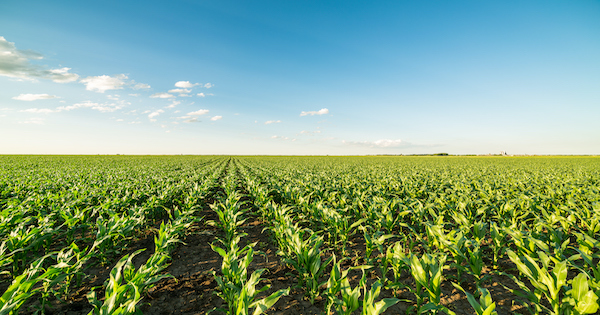Unpredictability is the dominant theme of this year’s growing season, and assessing the corn maturity of this year’s crop is no exception.
A lack of rain and soil variability has produced wildly inconsistent germination that consequently led to equally extreme variations of height and growth stage of corn plants within rows. When soaking rains have occurred, it’s been observed that height and maturity differences have only become more prominent.
Many growers haven’t faced a corn crop this unpredictable for several seasons, especially when it comes to determining whether the corn is fully mature and ready for harvest and silage. And considering the non-uniform tassel emergence that occurred in July, growers need to carefully consider their options when choosing a method of determining corn maturity.
First, let’s remember the definition of maturity when talking about corn. Black layer physical maturity (PM) occurs at a very specific time in the plant’s life cycle. PM is achieved when the kernels have filled, all nutrients have ceased, and kernel moisture is about 32%. At this point, the plant begins a rapid dry down that’s suitable for a dry grain harvest or high moisture corn but not for silage.
It’s also important to recall the two ways of determining PM — counting calendar days and tracking Growth Degree Days (GDD). While each method has advantages and disadvantages, certain technical elements can make each method more useful in some seasons than in others.
For example, counting calendar days from tassel emergence to PM may not be the best course of action this year. While all crops are different, applying the general rule that tasseled corn matures in 55-65 days may not prove accurate this year due to non-uniform tassel emergence and other factors and could result in a harvest unsuitable for the intended storage conditions.
Tracking GDD, on the other hand, may provide a more accurate measure of corn maturity for 2023’s crop. This method takes into consideration the average heat units from sunlight the corn receives each day, resulting in a more accurate prediction of maturity. The calculations aren’t extremely complex, but they require context and understanding.
Finally, don’t forget to think about silage moisture. To help you with that there is a helpful table to understand the specific optimal moisture concentrations for different types of silos — but keep in mind other best practices too. A 65% moisture at harvest target is best because it provides the best mix of fiber digestibility, starch digestibility, and dry matter yield per acre.
Before, during, and after the harvest, John Deere has the equipment you need to achieve the maximum corn yield, no matter the season. Find a dealer today.
